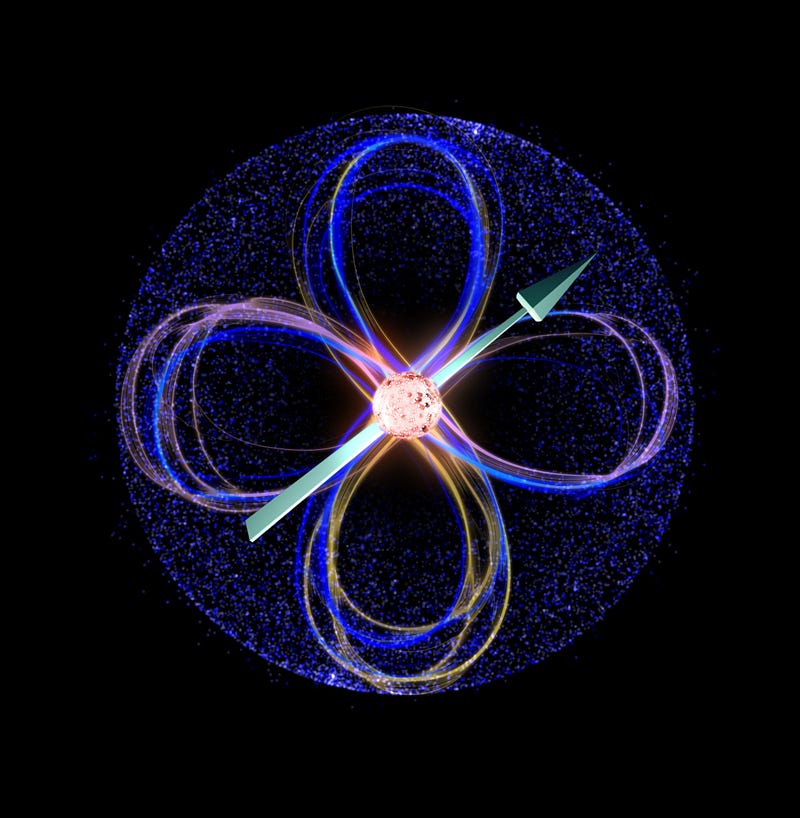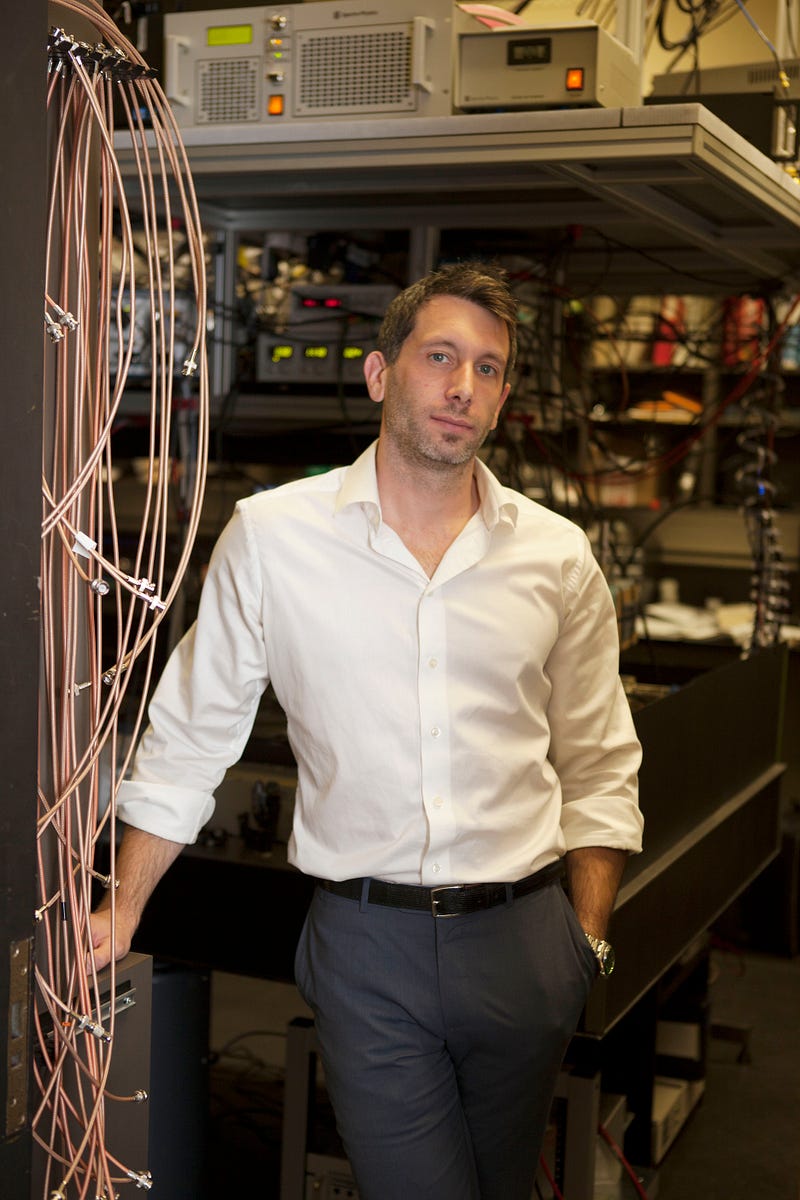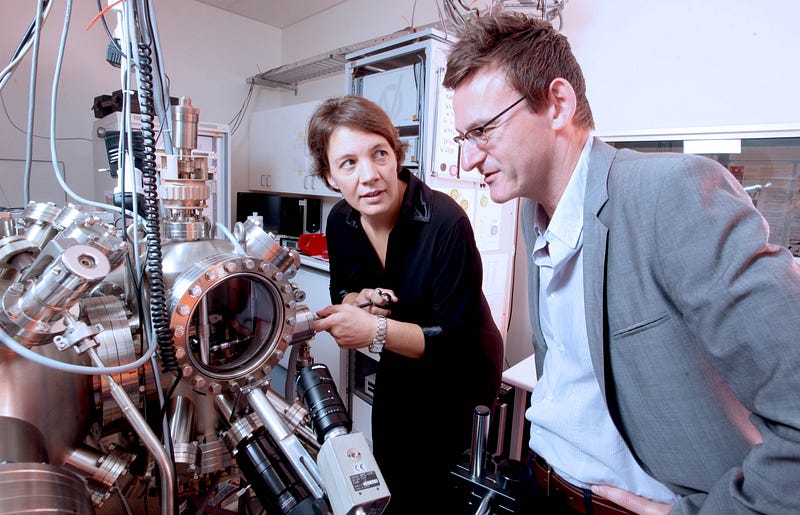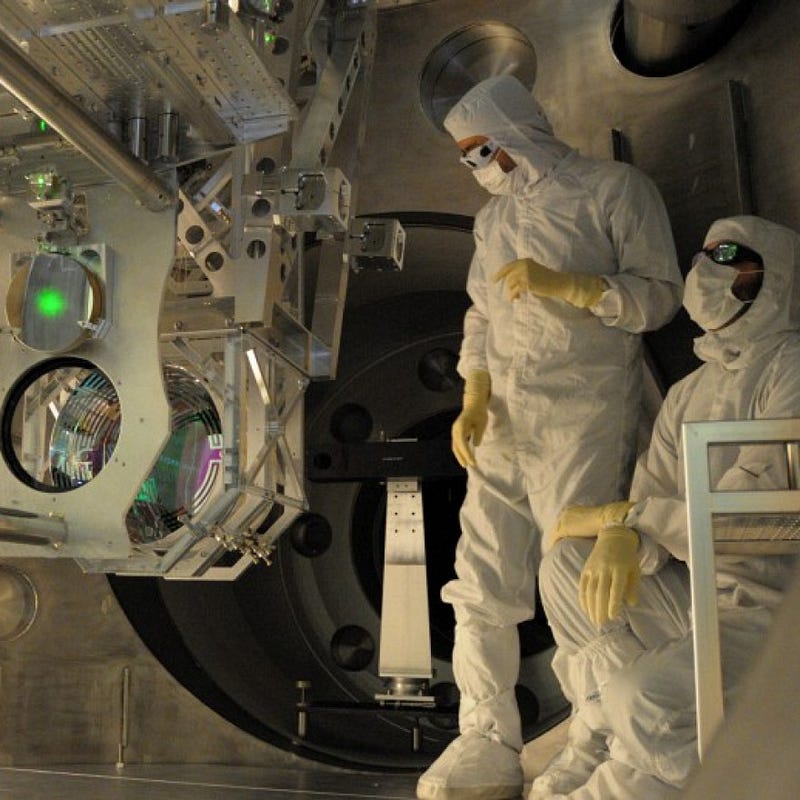The Quantum Revolution: Transforming Our Future Technologies
Written on
Chapter 1: Introduction to Quantum Mechanics
Delving into the realm beneath the atomic level reveals a world that operates in unexpected ways: particles can behave like waves, and they can leap across distances without traversing the intervening space. These intriguing phenomena, collectively known as quantum mechanics, were uncovered over a century ago and now underpin many of the technologies we rely on daily, such as computer memory, lasers, and solar panels.
The field of quantum research, fueled by years of dedicated scientific inquiry, is now heralding what has been termed the "second quantum revolution." This new wave of innovation builds on the first revolution, which altered our understanding of physical laws at the subatomic level. The current phase seeks to exploit these peculiarities to develop entirely new technological frontiers.
"Quantum technology — utilizing the most bizarre aspects of quantum physics as tools — is poised to be as groundbreaking in the 21st century as the advent of electricity was in the 19th," states Professor Michael Biercuk, director of the Quantum Control Lab at the University of Sydney.
"Quantum computing, in particular, has the potential to revolutionize how we handle information, making previously insurmountable challenges solvable, from the chemistry that drives pharmaceutical innovations to critical tasks in codebreaking and materials science."
His lab operates within the framework of the ARC Centre of Excellence for Engineered Quantum Systems (EQUS), one of six university-led initiatives in Australia focused on quantum technology. EQUS is a collaborative effort involving five universities — Sydney, Macquarie, Queensland, Western Australia, and the Australian National University (ANU) — along with the Australian government's Defence Science and Technology Group (DSTG) and industry partners like Microsoft and Lockheed Martin.
Biercuk also leads Q-CTRL, a quantum engineering firm that originated from research at the University of Sydney. This company is developing specialized quantum control solutions for devices created by industry and research entities, as well as designing advanced quantum sensors for sectors such as defense and mining.

Chapter 2: Emerging Companies in Quantum Technology
Another notable company emerging from this vibrant research ecosystem is Silicon Quantum Computing (SQC), which was established based on findings from the University of New South Wales (UNSW) in Sydney. This venture is supported by the Australian government, the State Government of New South Wales, telecommunications leader Telstra, and the Commonwealth Bank, Australia’s largest bank. Its objective is to construct a full-scale quantum computer using silicon.
While many global quantum computing initiatives are based on more exotic technologies like superconducting circuits and ion traps, SQC stands out due to its foundation in silicon. Given that the US$380 billion semiconductor sector has relied on silicon since the 1950s, SQC is considered a strong contender in the race for quantum computing.
UNSW is also home to the ARC Centre of Excellence for Quantum Computation and Communication Technology (CQC2T), which involves nearly 200 researchers across six universities — UNSW, Melbourne, Queensland, Griffith, Sydney, ANU — as well as DSTG, the Australian Signals Directorate, and an additional 17 universities and four international corporate partners.
"A quantum computer could tackle problems in minutes that would otherwise take thousands of years," says Professor Michelle Simmons, head of CQC2T and a former Australian of the Year who also serves on SQC's board. "This includes scenarios where computers analyze vast datasets or manage numerous variables, such as forecasting weather, predicting stock market trends, optimizing voice and facial recognition systems like those used in self-driving cars, and improving aircraft design through advanced simulations targeting drug development based on patients' DNA."
Simmons, who previously held a research fellowship at the University of Cambridge focusing on quantum electronics, was drawn to the Australian academic landscape due to its openness towards challenging scientific endeavors. "I wanted to create something that could have practical applications," she recalls. "Australia provided the freedom of independent research opportunities and the chance to engage in large-scale projects."

Chapter 3: The Road Ahead for Quantum Technologies
The ambition of these centers of excellence is matched by over 20 additional Australian research institutions and 14 universities, along with 16 private companies — either university spin-offs or branches of international giants like Microsoft and IBM — all striving to bring quantum technologies to the marketplace. According to a recent report by the CSIRO, titled "Growing Australia’s Quantum Technology Industry," this robust research foundation positions Australia to expand its quantum technology sector into a $4 billion industry by 2040, creating approximately 16,000 high-value jobs.
This projection assumes that Australia captures a mere 5% of the global quantum computing market and does not take into account the societal and industrial advancements that quantum technologies could facilitate in fields like mining, finance, healthcare, and energy.
"It’s thrilling to witness the strength of the research community that attracted me to Australia a decade ago now evolving into a world-class industrial base," added Biercuk, who transitioned from the U.S. National Institute of Standards and Technology to Australia. "I genuinely believe that quantum technology represents Australia’s most significant technological and export opportunity of our time."
Take, for instance, the field of cryptography, which is vital for both military and civilian communications. It relies on complex mathematical algorithms to scramble data in ways that would take traditional computers decades to decode. However, the advent of quantum computers could change that landscape dramatically. Fortunately, Australian universities possess exceptional theoretical and experimental expertise in quantum communications technology, particularly in quantum cryptography, which utilizes the perplexing properties of quantum mechanics to secure communications against eavesdropping.
In 2006, ANU became the first institution to commercialize quantum-enhanced cybersecurity solutions, establishing Quintessence Labs. However, quantum cryptography is most effective over short distances and secure fiber networks. To address this limitation, ANU physicists are working on a quantum-encrypted laser communication system that would enable quantum cryptography via satellite. This system relies on 'quantum memories' — also under development at ANU — capable of capturing and storing information encoded in laser beams without reading or altering the data, thus preserving its quantum state.

Quantum computing: Facts, fiction and the future - This video explores the realities and myths surrounding quantum computing, shedding light on its potential impact on various sectors.
Chapter 4: Quantum Applications in Defense and Healthcare
The global market for cybersecurity and secure communications is currently valued at $254 billion and is expected to grow at an annual rate of 10%. Even with conservative growth estimates, capturing just 5% of this market through quantum-enhanced cybersecurity and networking technologies could yield $820 million in annual revenue and create 3,300 new jobs in Australia by 2040, according to the quantum roadmap.
Defense applications also stand to benefit significantly from quantum technology. For instance, submarines, which can be challenging to detect due to their quiet operation, may soon face new detection capabilities. Researchers at the University of Adelaide's School of Physical Sciences are developing small atomic detectors, known as quantum magnetometers, that could be deployed on the seafloor to identify nearby submarines and alert coastal defense systems. These magnetometers excel at detecting slow-moving metallic objects underwater, making them particularly effective for submarine detection.
"Submarines are essentially large metallic structures, which inherently produce a magnetic field," explains physicist Dr. Ben Sparkes. "It's impossible to eliminate that completely, as metal is a requirement for building submarines."
"The remarkable aspect of these detectors is that they require no external power; they consist solely of atoms within a glass chamber. Variations in magnetic field gradients across a two-dimensional array can indicate the movement of objects nearby, allowing us to determine their direction as they pass multiple detectors in the array." Additionally, their high sensitivity to low frequencies makes them ideal for underwater detection.
Furthermore, quantum sensing technology is already yielding remarkable advancements in healthcare and medicine, such as enabling early disease detection and providing high-resolution imaging of biological systems, utilizing the quantum properties of fluorescent nano-diamonds.

Back to the Future on a Quantum Computer: Demystifying Time Loops - This video discusses the complexities of time loops within the context of quantum computing, helping to clarify common misconceptions.
Chapter 5: Conclusion
A leading institution in this field is the ARC Centre of Excellence in Nanoscale BioPhotonics (CNBP), which includes a partnership of the universities of Adelaide, Macquarie, RMIT, Griffith, and UNSW. With a collective of 260 researchers and 13 industry and academic partners across Japan, China, the U.S., Germany, Canada, and the U.K., they are focusing on research at the nanoscale — a dimension 100 times smaller than a single bacterium.
"We explore questions at the nanoscale of biological existence because it is there we can observe the intricate workings of cells," notes Professor Mark Hutchinson, director of CNBP at the University of Adelaide. "At this scale, we can witness the onset of life, pinpoint the triggers of pain, and monitor the progression of diseases, leading to groundbreaking scientific discoveries."
Interested in further insights? Don't hesitate to hit the ? button below or follow at the top to stay updated.